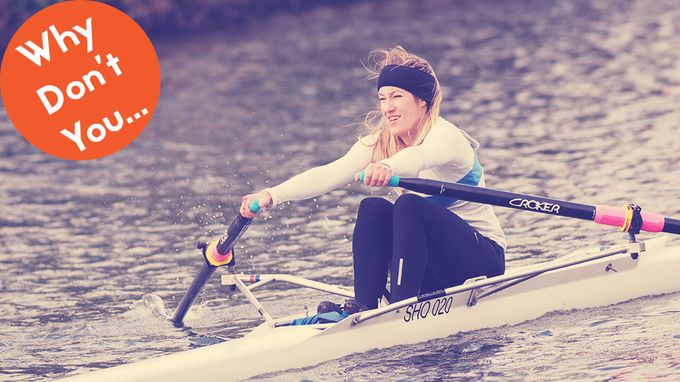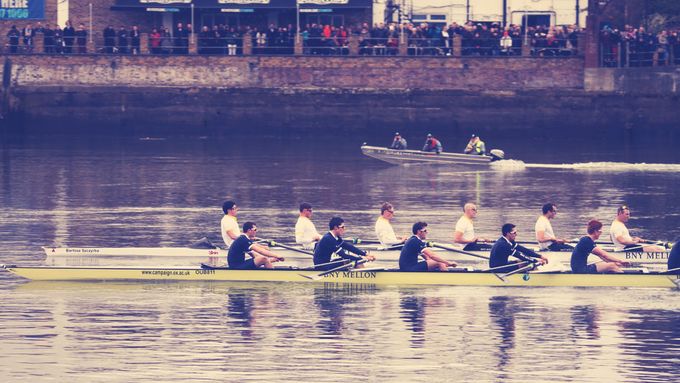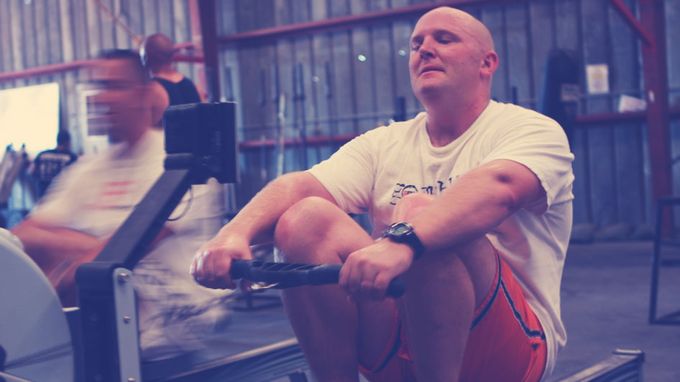
I tried rowing in a gym once, but then Jim Davidson sidled over and tried to chat me up, and it made me throw up a bit in my mouth, so it put me off. True story.
But I’m prepared to put that trauma to one side and give it another shot, because rowing is hot right now.
This year’s Oxford Cambridge Boat Race will be the first time that the women’s and men’s teams have raced on the same day – which hopefully means a bit more recognition for our rowing sistas.
Coupled with Team GB’s stellar performance at the Olympics and those crafty Winkelvoss twins off the Social Network showing you can row and get all cross about Facebook, rowing has enjoyed a massive surge in interest recently, finally getting its day in the Sun after all those years spent unloved and ostracised out in a dusty corner of the gym.
Rowing is a bona fide fitness weapon
And you can’t argue with its health benefits – better muscular endurance; improved heart function, lung and circulation systems; serious fat burn and stress reduction. Besides offering rip-roaring high-speed thrills, rowing is also a bona fide fitness weapon.
So, what with the Boat Race on 11 April – that one Saturday of the year when posh Oxbridge kids actually seem kind of bad-ass – I decided to dig into what this rowing game’s all about by speaking to Sarah Bareham, a member of Shoreham Rowing Club. She gives us her beginner’s guide to rowing.

“I started rowing at university up in Durham. I thought pottering round on the river every so often sounded fun. I loved it straight away.”
What do you get out of it?“I’ve got more and more out of rowing since I started. I love being outside and it’s really good exercise; it works most muscles in the body, so it’s a brilliant all-rounder and keeps you really fit. Plus I love racing – nothing beats the adrenaline of lining up on the start line. Especially if you win: I’m a terrible loser.”
So, it doesn’t just give you massive arms and shoulders then?“No, this is probably rowing’s biggest misconception. The majority of the power in your stroke actually comes from your legs – about 60 per cent – because you literally hang off your blade [oar] and then push hard with your legs, rocking your body back to engage your core, and then finally using your arms. Keeping your body balanced and in the correct position constantly is a killer core workout.”
It sounds pretty tough. Can you pick it up from scratch?The majority of the power in your stroke actually comes from your legs
“Yeah, for sure. A club will welcome you even if you just fancy a bit of rowing once a week, and getting the basic technique is a bit like riding a bike – it takes a few sessions to get used to it, but once your muscles remember what they’re doing, they don’t forget.”

What is the difference between rowing in a boat and on a rowing machine?We train on indoor rowers, but even in training we’ll make sure we move in unison
“There’s not a huge amount of difference in terms of body positioning and technique, but a rowing machine doesn’t float. When you’re rowing a boat you need to use balance, and also you’re in a team, so you need to work together. We train on indoor rowers, but even in training we’ll make sure we move in unison, so that we can work on our synchronisation.”
Are there different types of machine?“There’s a few. We use the same as the GB squad – the Concept2 – and you’ll find those in most gyms. But there are water rowers too, which are designed to replicate the conditions of outdoor rowing. You can set the drag factor on all of them to mirror the push and pull of water.”
Sarah’s 3 Rowing Tips For Beginners
1. “On a machine, don’t whack it up to the highest setting and think that means you’re working harder. Judge it by how fast you’re going per 500 metres. If you’re pulling 500 metres in two minutes on the lowest setting, you’re working just as hard as if you’re pulling 500 metres in two minutes on the highest.”
2. “Relax! Beginners get so tense in a boat that they panic about every wobble, which just makes everything harder.”
3. “Embrace the Lycra – baggy hoodies and tracksuit bottoms can get caught on your seat, the runners, or your blade. Saying that, although there’s loads of technical kit out there, don’t worry about buying it all until you know you love the sport. A pair of running leggings and a tight t-shirt will be fine to start out.”
